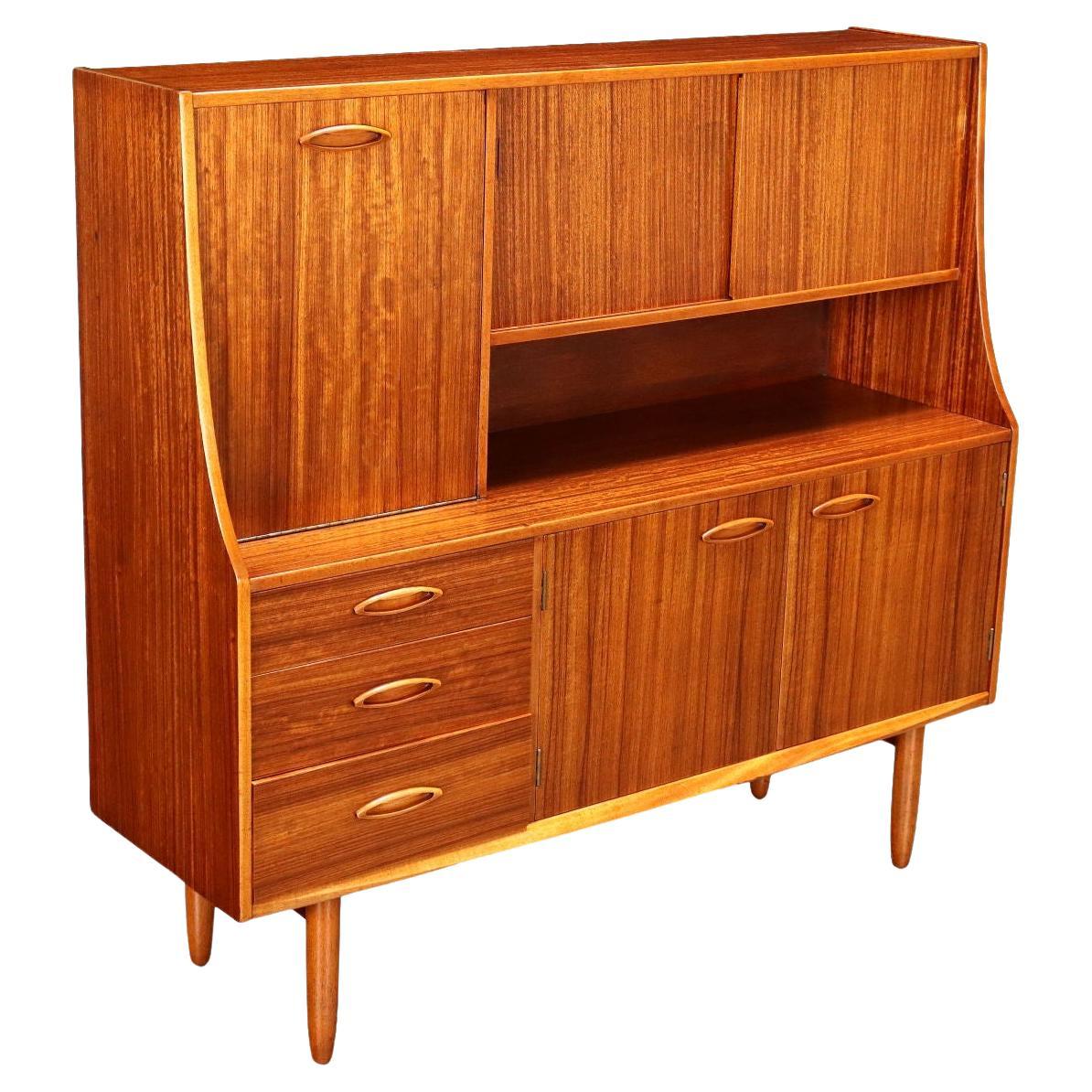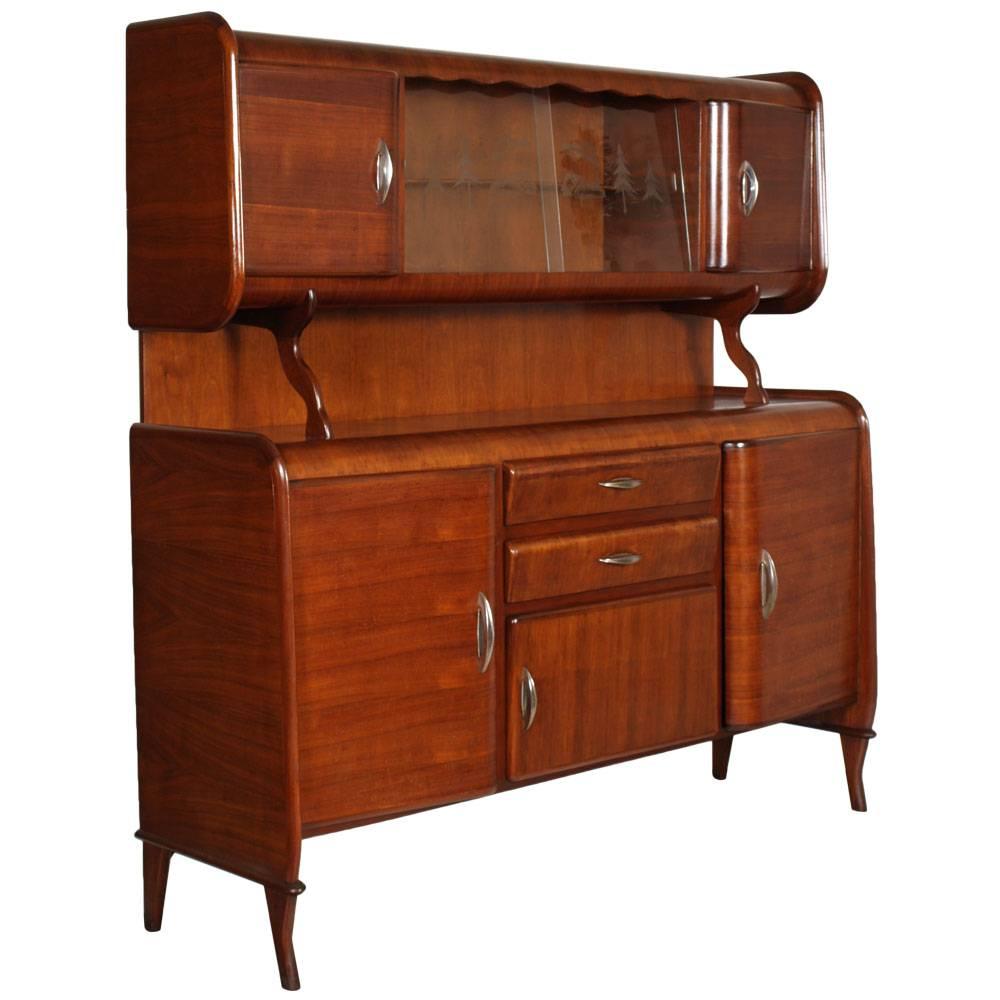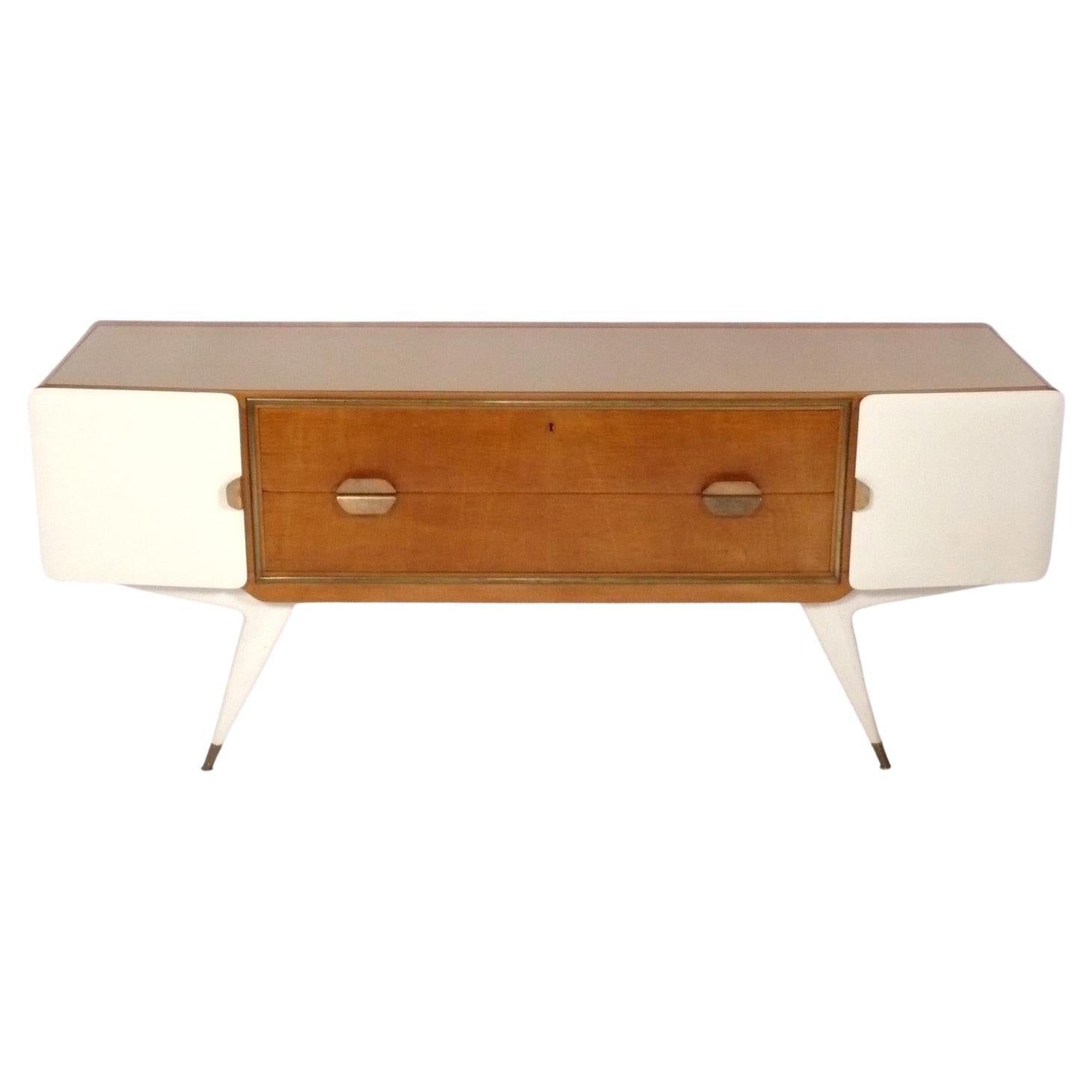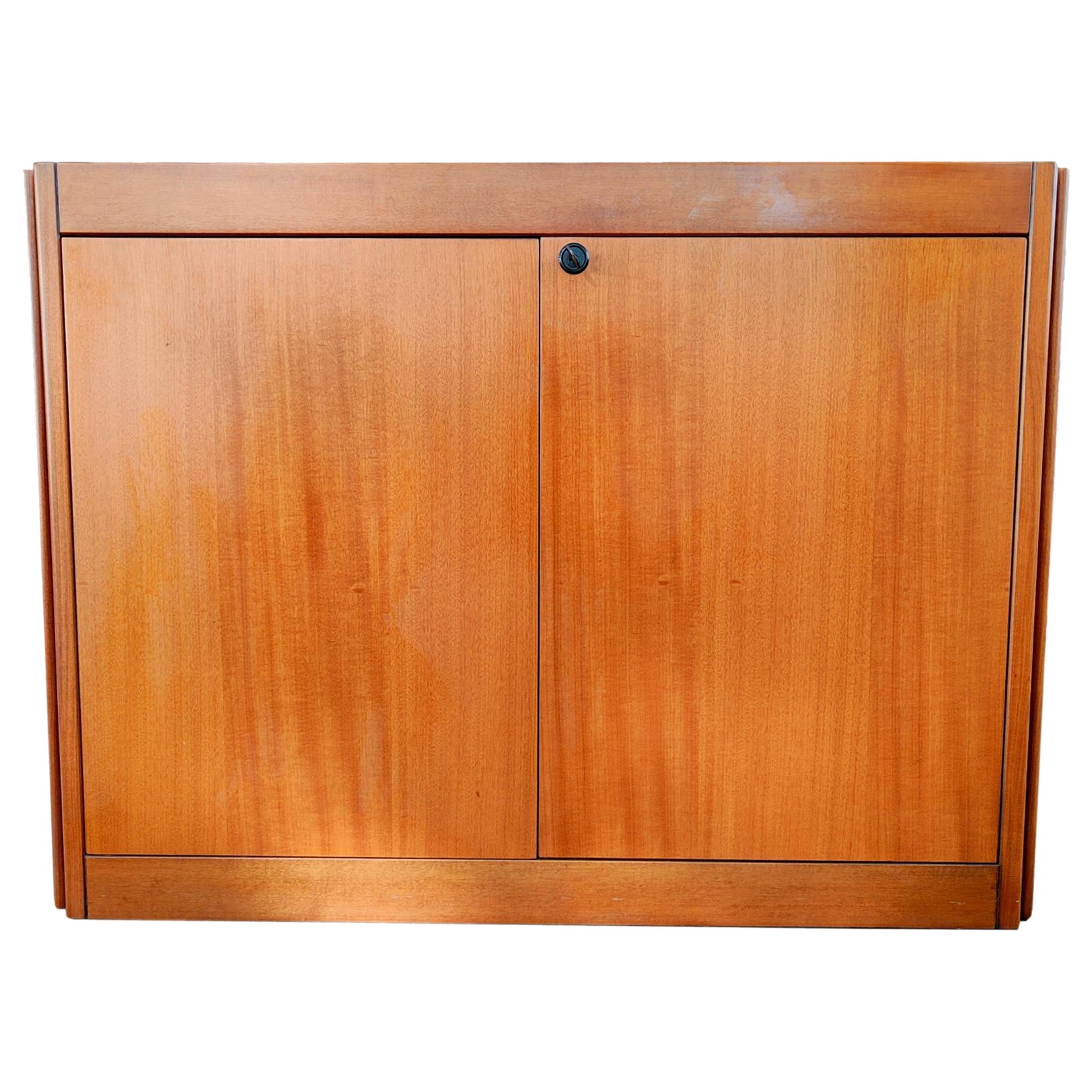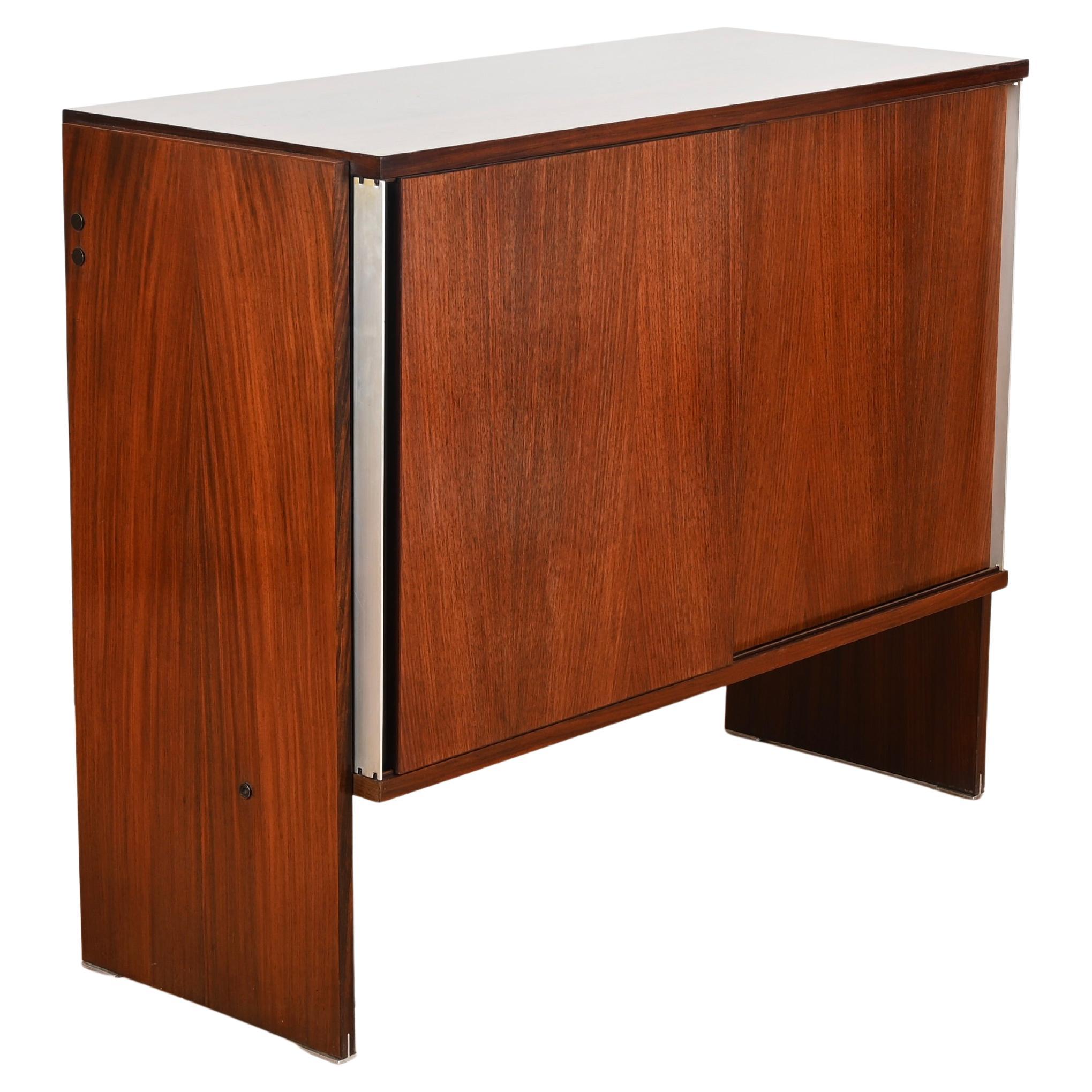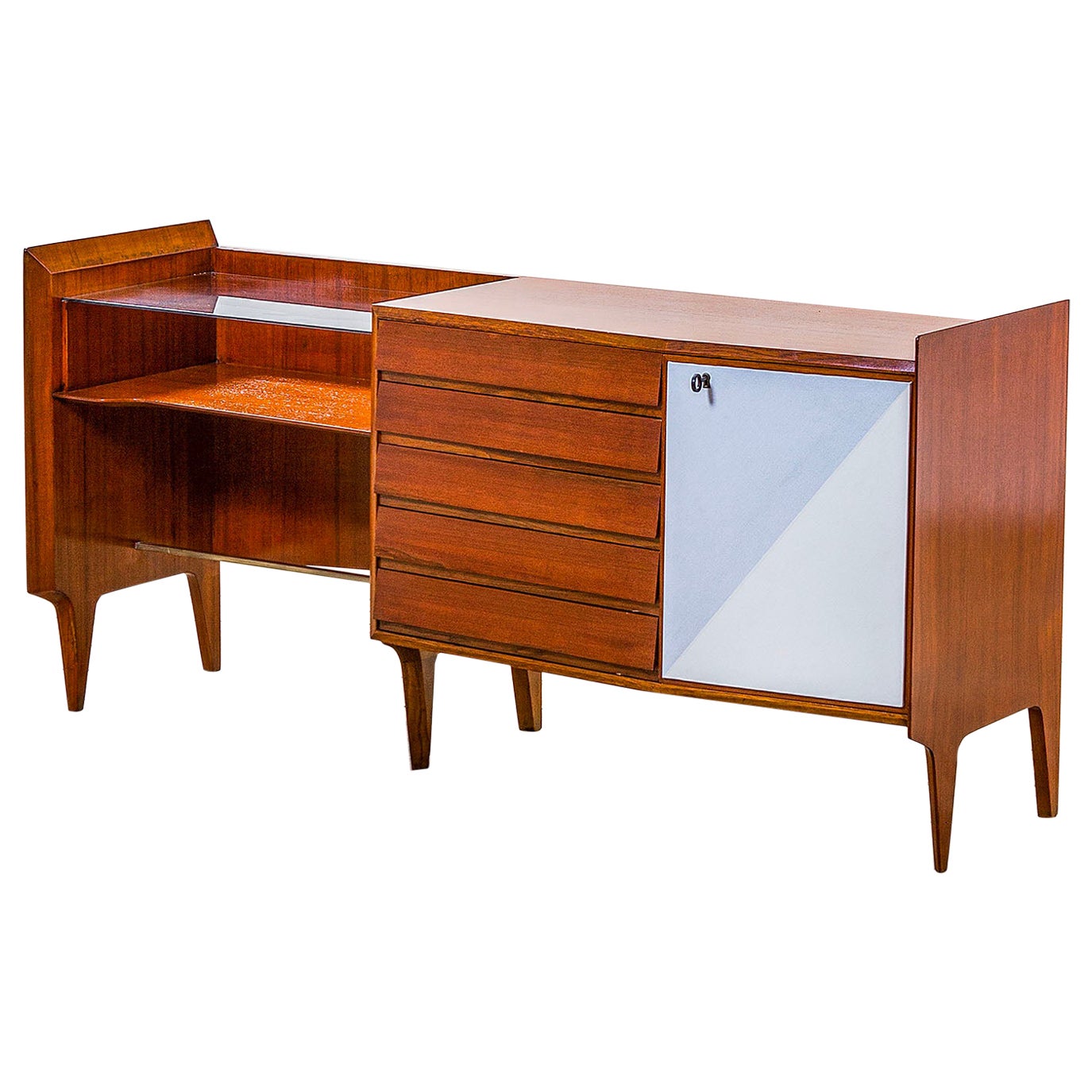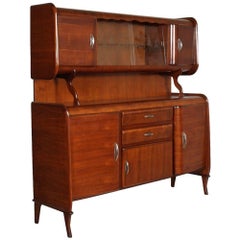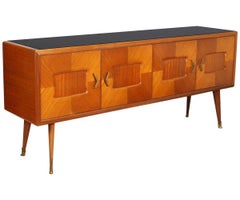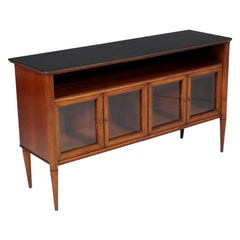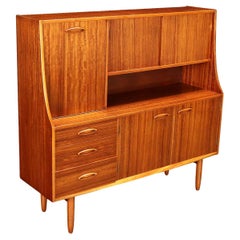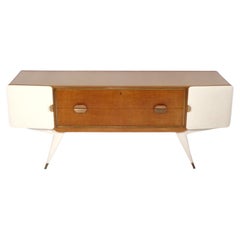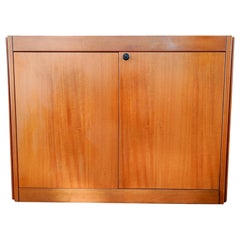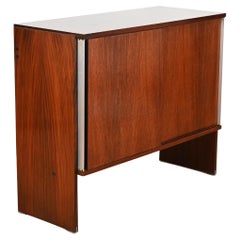Items Similar to Midcentury Credenza La Permanente Mobili Cantù, Gio Ponti Attributed, Polished
Want more images or videos?
Request additional images or videos from the seller
1 of 8
Midcentury Credenza La Permanente Mobili Cantù, Gio Ponti Attributed, Polished
$10,420.30
£7,731.91
€8,700
CA$14,553.51
A$15,783.63
CHF 8,290.16
MX$191,718.92
NOK 103,738.25
SEK 97,675.35
DKK 66,278.78
About the Item
Italian credenza sideboard by La Permanente Mobili Cantù, Gio Ponti attributed, polished to wax, circa 1950s. Legs and contours in solid blond walnut. Flat surfaces in walnut veneer and internal parts in mahogany veneer.
Measures cm: H 170, W 93, D 42 (internal shelves H 45cm, upper compartment H 32cm).
La Permanente Mobili Cantù
The History of Furniture cannot forget the history of an important reality which has become an institution such as that represented by the CONSORZIO ESPOSIZIONE MOBILI CANTU, born and strongly desired in 1893 on the initiative of a group of qualified craftsmen from Cantù. The intent was to join forces to be able to exhibit their products to the public, especially Milanese ones at the time, in a single large building. It was thus possible to offer a global vision of the furniture production of the Cantù context, encouraging its sale, but not only. It was and has remained an important moment of aggregation for its members, useful for comparing and exchanging experiences and knowledge. Experiences and knowledge that have contributed to the success of Cantù furniture throughout the world. The recognized professionalism of the members of the La Permanente Mobili consortium, founded mainly on the imitation of styles of the past, around the 1930s brought authoritative and extraordinary exponents of not only Italian architectural culture to Cantù with whom they had the opportunity to compare and renew themselves thanks to important projects that were formally very different from those created up until then. Projects that decree the start of lasting collaborations and will give impetus to glorious initiatives such as the Selective Furniture Exhibitions, events that have contributed to electing Cantù as the center of international design. One of the winning strategies that allowed the Cantù artisans, members of La Permanente to be appreciated over time was the choice not to specialize in a single style or in a single type of product, but to have proposed and created, often with extraordinary results, artefacts responding to the different stylistic trends emerging in furnishing and design culture. Renovating themselves in their aesthetic and formal language, aided by new materials and technologies, demonstrating sensitivity and awareness: qualities that have favored their growth and emancipation.
About Gio Ponti
Giovanni “Gio” Ponti (born November 18, 1891, Milan, Italy–died September 16, 1979, Milan, Italy) was one of the most influential Italian architects, industrial designers, furniture designers, artists, and publishers of the 20th century. He is considered the father of modern Italian design and is associated with the development of modern architecture in Italy. Throughout his long creative career, which spanned more than six decades, Gio Ponti created numerous furniture, decorative art, and industrial product designs using artisanal and modern production techniques, in addition to creating important works of architecture in Italy and abroad.
Early Influence Of Decorative Arts In Gio Ponti’s Approach to Architecture, Product, and Furniture Design
Ponti graduated from the Politecnico di Milano in 1921. In 1923, he started his first industrial design work designing ceramics for the Richard Ginori pottery factory, close to Florence. Two years later, he convinced Richard Ginori to participate in the Internationale des Arts Décoratifs et Industriels Modernes (a 1925 Paris exposition), where Ponti’s ceramic designs were very successful. During this time, Ponti forged a lasting relationship with Christofle executive and shareholder Tony Bouilhet, who later married Ponti’s niece–Carla Borletti–and for whom he designed Villa Bouilhet at the Saint-Cloud golf club near Paris, one of Ponti’s earliest house designs.
During his 15-year involvement with the Richard Ginori pottery factory, but especially during the early years, Gio Ponti collaborated with craftsmen and artisans to create rich designs with abundant colors, elaborate shapes, and skilled craftsmanship, mostly in the neoclassical style. This style and approach was at great odds with the functional and minimal approach of the then-prevalent Italian Rationalism, and it was distinctly present in Ponti’s work in the 1930s and 1940s, becoming less so over later years.
Gio Ponti Founds Domus Magazine, A Platform For The Emerging Italian Modernist Design
In 1928, Ponti started Domus, an architecture and design magazine with a mission to energize Italian architecture, interior design, and decorative arts. In his first editorial, as well as in several of his later writings at Domus, Ponti articulates some differences regarding the Italian house, La casa all’italiana, in which he suggests that the Italian house “does not just consist in the correspondence of things to necessities and needs of our life or in the organization of services” and that the house is “meant to shape our thoughts, suggest simple and healthy habits, invite to peaceful and serene recreation thanks to its opening towards nature.”
His leadership at Domus would allow him to play a pivotal role in this interwar period by asserting the Italian perspective and tradition to the European modernist trends of the time and by expressing his consideration to the ideas regarding the Novecento artistic movement, a counter-movement to Rationalismo.
- Attributed to:Gio Ponti (Designer)
- Dimensions:Height: 66.93 in (170 cm)Width: 36.62 in (93 cm)Depth: 16.54 in (42 cm)
- Style:Mid-Century Modern (Of the Period)
- Materials and Techniques:
- Place of Origin:
- Period:
- Date of Manufacture:1950s
- Condition:Wear consistent with age and use.
- Seller Location:Vigonza, IT
- Reference Number:Seller: FK251stDibs: LU249539901321
About the Seller
4.9
Vetted Professional Seller
Every seller passes strict standards for authenticity and reliability
Established in 2017
1stDibs seller since 2017
309 sales on 1stDibs
Typical response time: 7 hours
- ShippingRetrieving quote...Shipping from: Vigonza, Italy
- Return Policy
Authenticity Guarantee
In the unlikely event there’s an issue with an item’s authenticity, contact us within 1 year for a full refund. DetailsMoney-Back Guarantee
If your item is not as described, is damaged in transit, or does not arrive, contact us within 7 days for a full refund. Details24-Hour Cancellation
You have a 24-hour grace period in which to reconsider your purchase, with no questions asked.Vetted Professional Sellers
Our world-class sellers must adhere to strict standards for service and quality, maintaining the integrity of our listings.Price-Match Guarantee
If you find that a seller listed the same item for a lower price elsewhere, we’ll match it.Trusted Global Delivery
Our best-in-class carrier network provides specialized shipping options worldwide, including custom delivery.More From This Seller
View AllMid-Century Credenza Palazzi del Mobile with Showcase , Paolo Buffa atributed
By Paolo Buffa
Located in Vigonza, Padua
Cupboard two bodies 1940s curved walnut folder, Cantu production by Paolo Buffa designer
Top: Central display case with internal shelf and sandblasted stained glass; two doors with i...
Category
Early 20th Century Mid-Century Modern Cupboards
Materials
Walnut
Italian Modern Rationalist Credenza, Vittorio Dassi Attributable in Rosewood
By Vittorio Dassi
Located in Vigonza, Padua
Midcentury Italian Rationalist credenza, external in rosewood with inlaid maple and interior in light wood maple. Crystal top shelf and brushed brass accessories. In excellent condit...
Category
Mid-20th Century Italian Mid-Century Modern Sideboards
Materials
Brass
Italy Mid-Century Sideboard Credenza by Paolo Buffa per Palazzi dell'Arte Cantù
By Paolo Buffa
Located in Vigonza, Padua
Italian Paolo Buffa credenza of the 1940s, in massive walnut and veneer rosewood chessboard. Shaped top mirror, black lacquered glass top, four doors with internal shelf, original gi...
Category
Vintage 1940s Italian Mid-Century Modern Sideboards
Materials
Brass
Credenza Sideboard Display Cabinet, ARCA Milano, Guglielmo Urlich attributed
By Guglielmo Ulrich
Located in Vigonza, Padua
Midcentury credenza sideboard with label ARCA- Via Montenapoleone- Milano, Guglielmo Urlich attributed, in carved walnut, with four closures in burnished plum-colored glass with the top ebonized wood.
Cabinet with meticulous attention to detail which show the commitment of the famous architect designer Guglielmo Urlich
ARCA Milan plate...
Category
Mid-20th Century Italian Mid-Century Modern Credenzas
Materials
Brass
Midcentury Cabinet Art Deco from Lissone, Made in Milan, Gio Ponti Style
By Gio Ponti
Located in Vigonza, Padua
1940s cabinet from Lissone - Milano, Gio Ponti manner with walnut veneer, solid maple, door of the closed in veneered bird's-eye maple. Closed compartment with sliding glass embellis...
Category
Mid-20th Century Italian Art Deco Cabinets
Materials
Brass
1960s Sideboard La Permanente Mobili Cantù in Veneered Rosewood with Maple Inlay
Located in Vigonza, Padua
Large characteristic Mid century Modern sideboard cabinet of Italian design by La Permanente Mobili Cantu with central flap, in rosewood veneer, glass shelves, with inlay decorations...
Category
Mid-20th Century Italian Mid-Century Modern Sideboards
Materials
Rosewood
You May Also Like
English sideboard 1960s, teak, brown
By Non-Standard Furniture and Lighting
Located in Milano, IT
Sideboard with exposed drawers, hinged and sliding doors, flap for bar compartment. Teak veneer wood. ...
Category
Vintage 1960s English Mid-Century Modern Credenzas
Materials
Teak
$2,203 Sale Price
20% Off
Italian Modern Credenza in the style of Gio Ponti circa 1950s 70" Width
By Gio Ponti
Located in Atlanta, GA
Elegant Italian Credenza in White Lacquered and Natural Wood with Brass Hardware, in the style of Gio Ponti, unsigned, Italy, circa 1950s. It offers a voluminous amount of storage wi...
Category
Vintage 1950s Italian Mid-Century Modern Credenzas
Materials
Brass
credenza design angelo mangiarotti for molteni 1960
By Angelo Mangiarotti
Located in taranto, IT
wonderful credenza designed by angelo mangiarotti for Molteni, Italy, about 1960.
Made in wood with marble top.
Very good conditions, as pics, shipping costs...
Category
Vintage 1960s Italian Mid-Century Modern Credenzas
Materials
Marble
Cabinet Credenza Sideboard with Sliding Door by Ico Parisi for MiM, Italy 1960s
By MIM Roma
Located in Roma, IT
Stunning small sideboard with sliding doors in wood and aluminum designed by Ico Parisi and produced by MiM Roma in Italy during the 1960s. The sideboard is signed inside.
In amazin...
Category
Vintage 1960s Italian Mid-Century Modern Credenzas
Materials
Metal, Aluminum
$1,437 Sale Price
20% Off
20th Century Gio Ponti Sideboard in Wood with Drawers and Storage for Dassi, 50s
By Dassi, Gio Ponti
Located in Turin, Turin
An eclectic personality, from his early days he was active in the fields of architecture, painting, graphics and set design. He graduated in architecture from the Milan Polytechnic i...
Category
Vintage 1950s Italian Mid-Century Modern Credenzas
Materials
Crystal, Brass
MIM Roma, Sideboard with Sliding Door, Italy, 1960s
By MIM Roma
Located in Roma, IT
Wood sideboard with sliding doors, MIM Roma. Riginiture in aluminum.
It rests on four aluminum bases.
Label inside.
Category
Vintage 1960s Italian Mid-Century Modern Credenzas
Materials
Metal, Aluminum
More Ways To Browse
Permanente Mobili Cantu
La Permanente Cantu
Paris Exposition 1925
Mahogany Veneer Italy
Italian Rationalism
Used Event Furniture
Floating Hutch
Florence Knoll Model 541 Cabinet
Ge 430
Herringbone Credenza
Knoll Credenza Black Lacquer
Knoll Style Credenza
Knoll Wall Mounted Credenza
Lattice Credenza
Low Profile Credenza
Mcm Walnut Sideboard
Memphis Credenza
Midcentury Bench Credenza
